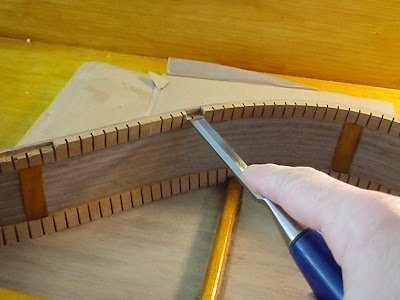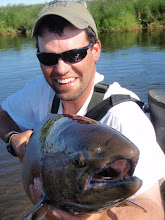Kawalek's kit came with veneer for the top of the headstock, but I found a piece of cherry at the the local speciality woods store that had a nice 'flame' to it and decided to use it for both the front and back of my headstock. I cut off a length of the cherry long enough to cover the peghead. I then resawed it to about 8mm thickness, and stuck it under the planer until I had a thickness of about 5mm. I also had to take a little off of the back of the peghead itself to get the overall thickness (once both pieces of the veneer were glued on) to the proper dimensions. Here are some pics.
In this one you can see that both pieces of veneer (which have been dry clamped) are still too thick, as the tuning machines won't be able to work.

Getting closer . . .

And, finally . . .

Once I got to this point I stopped planing, as I knew that there would be some sanding to take an additional 1-2 mm off the veneer. I then drilled two 1/16" holes in the veneer to hold it in place with brad nails after I got it glued up, but before I could clamp it. I also marked on the veneer which piece was for the top and which was for the bottom of the peghead. I then marked out the size of the truss rod slot on the top piece of veneer so that I would know where to cut and chisel it out. Here are some pics:

Notice in this picture I have the nut inserted for two reasons: 1) so I know exactly where the veneer needs to be; and, 2) so that I can angle the piece of veneer, by sanding it, to sit flush against the nut once it is glued in.




And here it is all clamped up. Be sure to use a couple of additional pieces of wood to help in the clamping. That's all there is to it.

















































